While trying to open PDF files with Adobe Acrobat, you might encounter AcroCEF/RdrCEF.exe Application Error or AcroCEF/RdrCEF.exe Bad Image error. For any not-so-tech-savvy person, this can be a difficult situation to deal with. Here’s what you can try to fix the issue and restore normalcy.
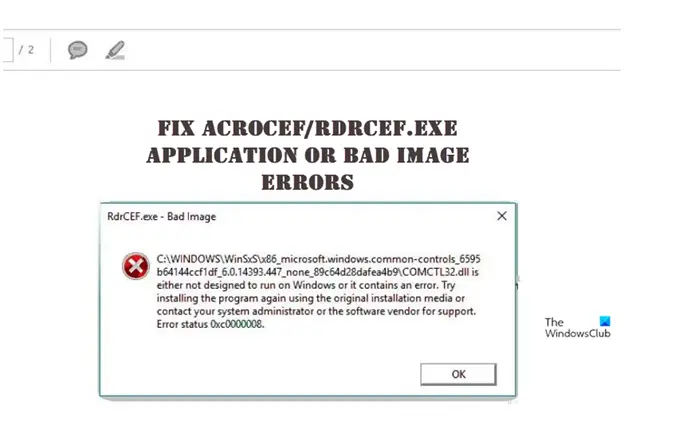
With Adobe Acrobat you can create, view, modify and print files in the Portable Document Format (PDF). When you run the program, files like AcroCEF.exe/RdrCEF.exe execute processes that handle cloud connectivity features like Fill and Sign, Send For Signature, Share for View/Review, etc. So, an error related to these files or processes run by it may stop you from using the Acrobat Reader properly.
- End Acrobat Adobe AcroCEF/Adobe RdrCEF task.
- Safelist Acrobat/Acrobat Reader folder to prevent DLL injection in the AcroCEF/RdrCEF processes.
- Repair Acrobat/Acrobat Reader installation.
Before covering these methods in a bit more detail, let us find what is AcroCEF.exe and RdrCEF.exe error and
What is RdrCEF.exe error?
The RdrCEF exe error means that Adobe Acrobat DC was either unable to locate this file on startup, or the file has become corrupted, resulting in an aborted start-up process. On most occasions, Adobe Acrobat DC will fail to start without resolving these errors.
What is AcroCEF.exe?
AcroCEF.exe/RdrCEF.exe are inseparable processes of Acrobat/Reader. They are responsible for handling multiple integral aspects of an application, like Fill and Sign, Send For Signature, Share for view/review, and other features. These cannot be removed or disabled via any registry changes.
Fix AcroCEF/RdrCEF.exe Application or Bad Image Errors
1] End Acrobat Adobe AcroCEF/Adobe RdrCEF task
Press Ctrl+Shift+Esc together to open the Windows Task Manager.
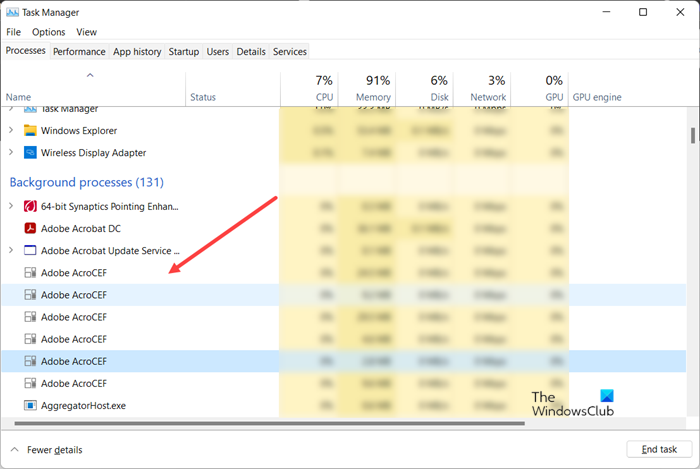
Switch to the Processes tab and locate the Adobe AcroCEF process running under it.
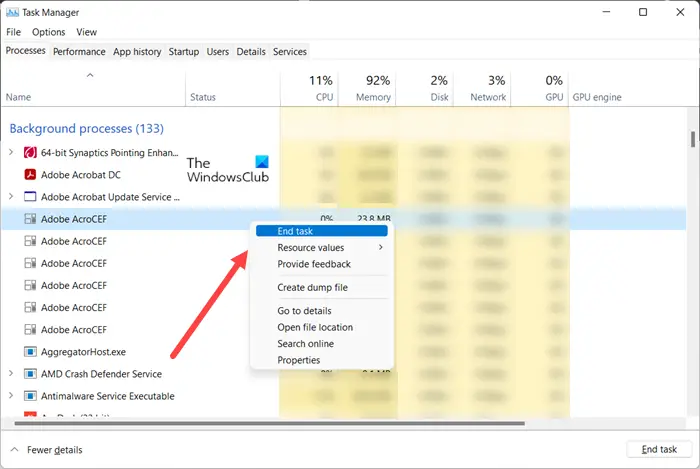
When found, right-click the entry and select the End Task option.
Similarly, do the same for Adobe RdrCEF entry.
Launch the Acrobat/Acrobat Reader application.
2] Safelist Acrobat/Acrobat Reader folder to prevent DLL injection in the AcroCEF/RdrCEF processes.
If the above method fails to work, use a different approach and try to the ProcMon logs. This will help you identify the third-party DLLs loaded in the AcroCEF or RdrCEF processes, and then safelist the Acrobat or Acrobat Reader folder in the corresponding third-party software. For this, download the Process Monitor tool from Microsoft.
Launch it, go to the Filter tab and choose Filter.
In the Process Monitor Filter, select Process Name and type AcroCEF.exe.
When found, click Add, and then hit the OK button.
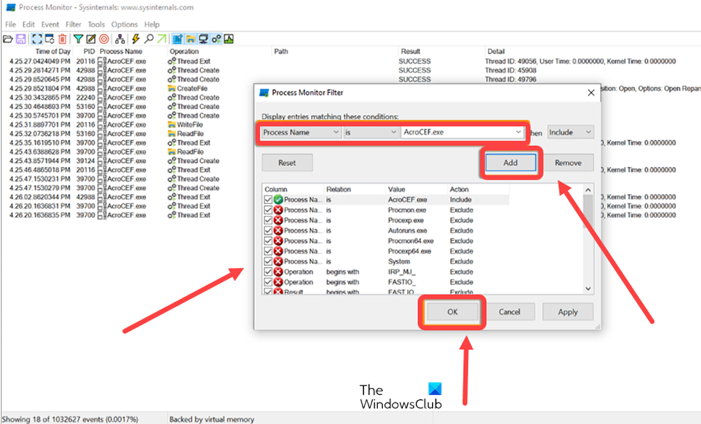
Launch Acrobat and then wait for a few minutes. The tool should begin collecting the logs. Save it in PML format.
Once the process is complete, open the PML log file in the Process Monitor tool.
Find and double-click the AcroCEF or RdrCEF process.
When the Event Properties window opens, you’ll find the Modules section listing the loaded DLLs. Check for any external DLLs that are loaded in the AcroCEF or RdrCEF process.
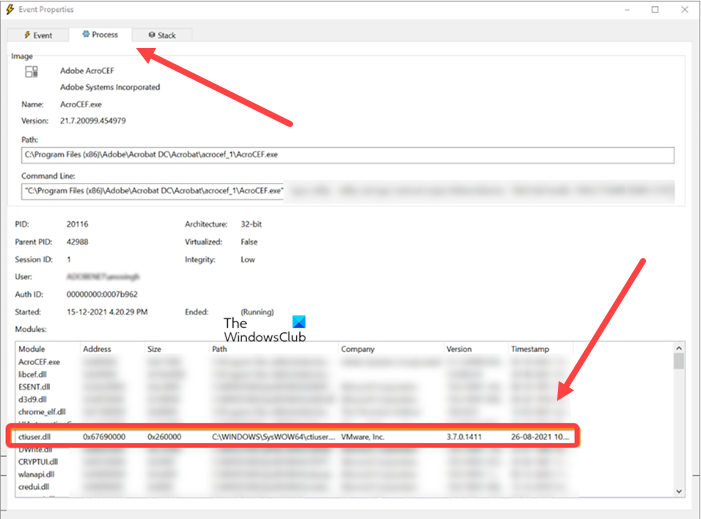
Add the Acrobat installation directory in the exception list of the corresponding third-party application.
Repeat the complete exercise for any third-party DLLs loaded in the AcroCEF or RdrCEF process.
3] Repair Acrobat/Acrobat Reader installation
If the above method does not fix the issue and the problem continues to persist then, repair the Acrobat Reader installation. For this, open Acrobat Reader, choose Help from the menu and hit the Repair Installation button to repair the application.
Then, restart your computer to allow the changes to take effect.